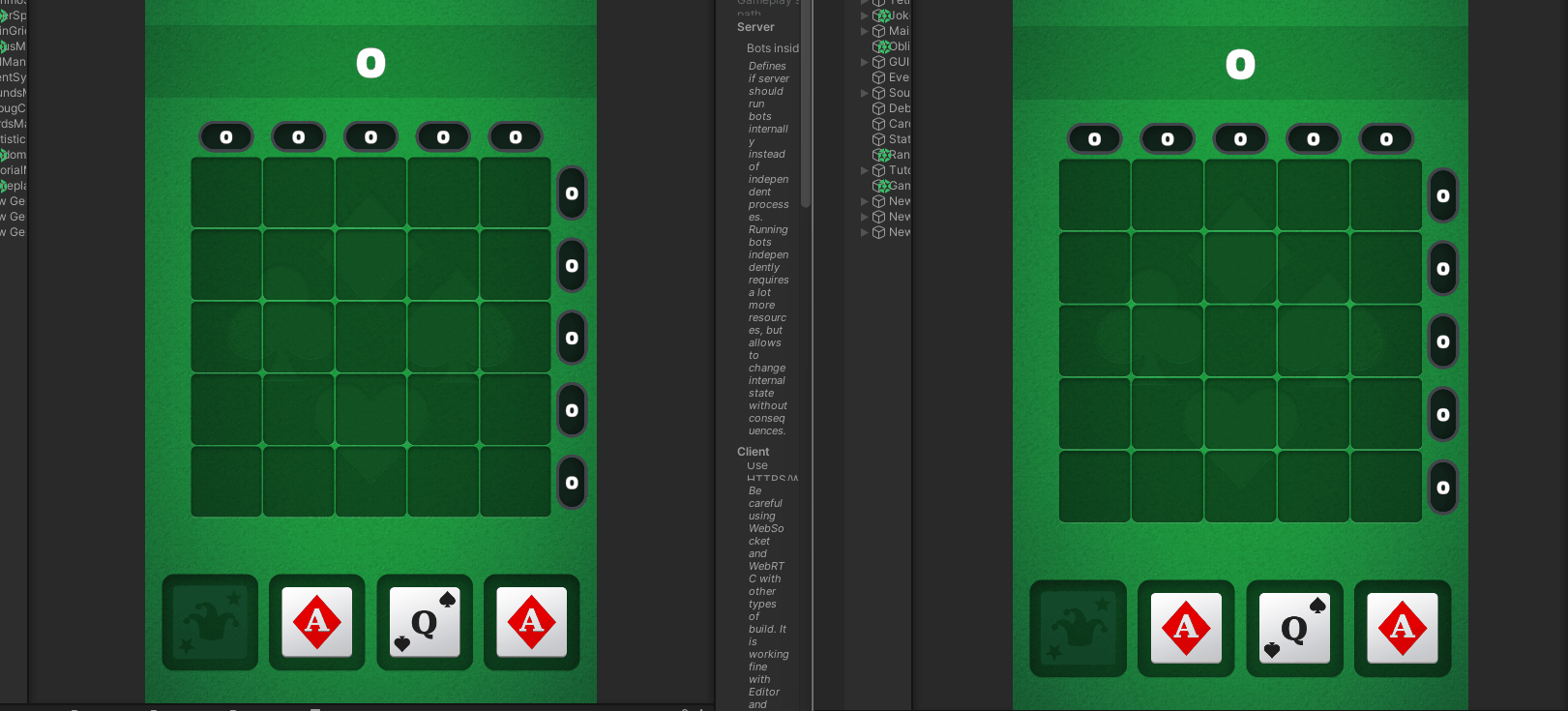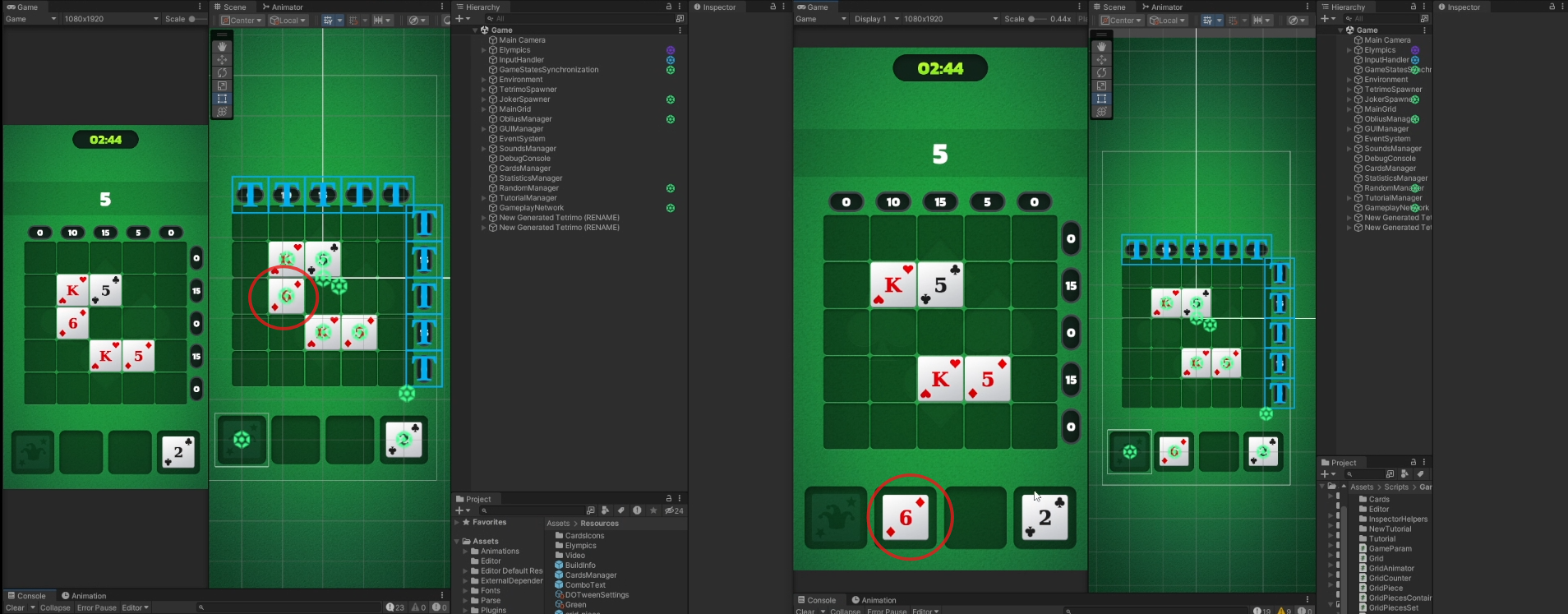Turn-Based Games: Case Study
This tutorial assumed that you are familiar with creating basics of Hypercasual games using Elympics.
If you are not, please follow this tutorial
For this tutorial, we will use an existing game as a Case Study to demonstrate how to correctly implement synchronization in Turn-Based Games. This game is Solitaire-21, you can get familiar with the game mechanics by clicking here.
Understanding the Problem in Solitaire 21
Solitaire 21 was a game developed in the early days of Elympics. As such, there was no information about how to properly implement turn-based games using Elympics.
The game's original implementation used Input Synchronization in order to synchronize the logic of the Server & Client as is outlined in a lot of guides, but unfortunately, there was little to no server authoritative implementation in this approach
Here you can see the input being synchronized on every mouse movement for the cards.

If you have a keen eye, you can notice that there is a little delay on the Server (left) whenever the card is moved on the Client (right).
The delay caused issues as the synchronization between the Server & Client could be broken if the player made fast movements or had bad internet.
In the image below, the player moved the 6 card up accidentally, and placed it back in the spawn very quickly. However, the inputs were still synchronized to the server with the delay mentioned above.

Normally, this delay would not be too important if correct Server Authoritative implementation was done. Meaning, when the card is placed on the Server, the Client should disregard their board, and "copy" what happened in the server.
BUT, this would be very frustrating for players that did not intend to move the card to that specific grid, so the solution of making the game more Server Authoritative is also not ideal.
Proposed solution
After some brainstorming, the proposed solution for this game was to rework the way synchronization is implemented.
Given the nature of turn-based games, the input synchronization is not needed at all, as the games have a set order of how things should go.
In Solitaire's case, the order is like so:
- Player places card on grid
- Game checks if cards can be cleared
a. If there is, cards must be cleared - Repeat
As you can see, this game loop is very simple, so adding input synchronization here is not needed as there is no real time movements or objects being changed.
So the solution for this issue is to simply use "RPC" Calls